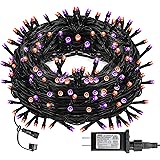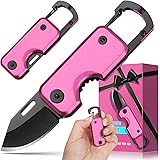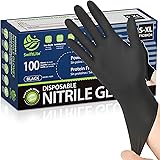Changing high-reach light bulbs without a ladder is not just a convenience; it’s a critical safety measure and an essential upgrade to any home maintenance toolkit. As demonstrated in the video above, specialized light bulb changer poles offer a transformative solution for tasks that once required precarious balancing acts or the cumbersome deployment of a heavy, often unwieldy ladder. This technological leap allows homeowners and property managers alike to tackle elevated illumination points with unprecedented ease and confidence.
The Peril of the Perch: Why Traditional Ladder Use Falls Short for High Ceilings
The traditional method of replacing light bulbs in high ceilings—employing an extension ladder—is fraught with inherent risks and inefficiencies. For fixtures located 13 to 15 feet in the air, or even higher, the logistical challenges escalate significantly. Even for individuals over six feet tall, like our video host, these heights remain well beyond arm’s reach, necessitating a substantial ladder.
1. **Safety Concerns:** Falls from ladders are a leading cause of injuries in homes and workplaces. The Centers for Disease Control and Prevention (CDC) reports thousands of emergency room visits annually due to ladder-related incidents, many resulting in severe injuries, including fractures, concussions, and even fatalities. Navigating a tall, heavy ladder through furniture, then stabilizing it on potentially uneven surfaces, introduces a complex risk matrix. The simple act of unscrewing a bulb can become a dangerous chore, risking a “giant medical bill” as the video aptly warns.
2. **Physical Exertion and Time Consumption:** Hauling a tall ladder from the garage or basement, setting it up, climbing, performing the task, descending, and then storing it away is a laborious and time-consuming process. This isn’t merely about physical effort; it’s about the opportunity cost. What could be a quick five-minute task often balloons into a half-hour ordeal, purely due to the equipment setup and breakdown.
3. **Space Constraints:** Modern homes often feature open-concept designs but may still have tight corridors, delicate flooring, or intricate fixtures that make ladder placement challenging or even damaging. A broad-based ladder requires significant clearance, which isn’t always available, particularly when dealing with overhead lighting in a furnished living space or over a stairwell.
Unveiling the Ingenuity of the Telescoping Light Bulb Changer Pole
The innovation embodied in a high-quality light bulb changer pole is a testament to problem-solving in home maintenance. These tools, often seen in well-stocked hardware and tool stores, simplify what was once a daunting task.
The core of this system is a telescoping pole, much like an advanced broom handle, designed for extended reach. Crafted from lightweight yet durable materials like fiberglass or aluminum, these poles offer impressive rigidity and stability even at full extension. This structural integrity is paramount, ensuring precise control when engaging with delicate light fixtures. The expansion mechanism typically involves a twist-lock collar, allowing users to effortlessly adjust the pole to the precise height required, securing it firmly in place for confident operation.
Firstly, the inherent design promotes safety. By keeping both feet firmly on the ground, users eliminate the primary hazard associated with ladder work: falls. This ‘ground-level’ operation also provides better leverage and stability, particularly when dealing with stubborn or tightly screwed-in bulbs. The contrast between this lightweight, easily maneuverable pole and a cumbersome, heavy ladder is stark, making the choice for efficiency and safety abundantly clear.
A Specialized Toolkit of Attachments for Every Luminaire
What truly elevates the utility of a light bulb changer pole beyond a simple extension rod are its specialized attachments. These interchangeable heads cater to a variety of bulb types and scenarios, transforming the pole into a versatile tool for comprehensive lighting maintenance.
1. **The Suction Cup Attachment:** This is often the go-to attachment for many standard, smooth-surfaced bulbs, particularly those with a broad, flat face, as the video demonstrates. Its principle relies on creating a vacuum seal against the bulb’s surface. When properly centered and pressed, it forms a strong bond, allowing for secure twisting and removal. For optimal performance, as highlighted in the video, ensuring the suction cup is positioned directly in the middle of the bulb facilitates a more balanced grip and easier manipulation. The innovative inclusion of a string to release the suction after the bulb is in place is a brilliant design feature, preventing the suction cup from becoming a permanent fixture itself.
2. **The Gripper/Cage Attachment:** Ideal for irregularly shaped bulbs, floodlights, or those with textured surfaces where a suction cup might fail to adhere, the gripper attachment typically features soft, pliable rubber or foam-lined “fingers” that gently but firmly encase the bulb. This design allows it to adapt to various bulb sizes and shapes, providing a secure hold without crushing the glass. The video touches on using a specific attachment for ‘regular light bulbs,’ which likely refers to this type of versatile gripper.
3. **The Broken Bulb Remover:** A truly indispensable attachment, this device is designed to safely extract the base of a broken bulb from its socket. Often made with a rubberized, conical tip, it’s inserted into the broken base and twisted. The friction and grip allow the user to unscrew the remaining portion without touching exposed glass or risking electrical shock. The paramount safety advice, echoed in the video, is to always ensure the power to the fixture is off before attempting to handle a broken bulb, even with a specialized tool.
4. **Other Specialized Heads:** Beyond these core attachments, some kits include additional heads for specific bulb types like candelabra bulbs, recessed lighting, or even fluorescent tubes. The duster attachment, also showcased, transforms the pole into a high-reach cleaning implement, perfect for ceiling fans, HVAC ducts, or intricate crown molding.
Mastering the Technique for Seamless Bulb Swaps at Height
While the light bulb changer pole simplifies the task, mastering its use ensures efficiency and prevents potential mishaps. The video provides excellent visual cues, but a few expanded operational tips can enhance the experience.
1. **Prioritize Safety Protocol:** Before any interaction with a light fixture, *always* turn off the power at the circuit breaker. This simple step eliminates the risk of electrocution, even when using non-conductive tools. Furthermore, wearing safety glasses, as demonstrated, is a prudent measure, especially when dealing with older or potentially faulty bulbs that might shatter during removal.
2. **Assess the Fixture and Bulb Type:** Before extending the pole, visually inspect the bulb and its surrounding fixture. Determine the correct attachment: suction for smooth, standard bulbs; gripper for textured or unique shapes; the broken bulb remover if applicable. For fixtures with tight housings, like some recessed lighting, a compact suction cup might be the only viable option, as observed when the video host needed to switch attachments for a difficult fixture.
3. **Extend and Lock the Pole:** Extend the pole gradually, ensuring each section locks securely. Over-extension can lead to instability or bending. Aim for a comfortable working height that allows for steady, controlled movements without excessive straining.
4. **Engage and Twist with Precision:** * **For removal:** Gently guide the chosen attachment to the bulb. For suction cups, apply firm, even pressure to create a strong seal. For grippers, ensure the bulb is centered. Then, with smooth, consistent counter-clockwise turns, unscrew the bulb. Avoid jerky movements, which can dislodge the bulb or strain the pole. The suction cup’s effectiveness, as the video repeatedly highlights, is key here for a secure grip.
* **For installation:** Secure the new bulb to the attachment. Carefully guide it into the socket, ensuring it aligns perfectly with the threads. Apply gentle, clockwise pressure to screw it in. Stop when the bulb is snug; over-tightening can damage the fixture or the bulb’s base. Once screwed in, gently release the attachment (using the string for suction cups).5. **Practice Makes Perfect:** For first-time users, practicing on an easily accessible bulb can build confidence and familiarity with the tool’s feel and responsiveness. This “muscle memory” is invaluable when working at elevated heights.
Beyond Illumination: Expanding the Utility of High-Reach Tools
While the primary function of these tools is high-ceiling light bulb replacement, the versatility of a telescoping pole extends far beyond illumination tasks. The modular design, allowing for various head attachments, transforms it into a multi-purpose maintenance marvel.
Firstly, the integrated duster attachment is a simple yet powerful addition, capable of tackling cobwebs, dust accumulation on ceiling fans, or intricate crown molding. Imagine effortlessly dusting the top blades of a ceiling fan or cleaning delicate chandeliers without balancing precariously on a chair. This capability speaks to the broader potential for elevated cleaning tasks, from reaching skylights to dusting high shelves.
Secondly, consider the application for routine property maintenance. For businesses or larger residences, these poles can facilitate inspections of high-level sensors, vents, or security cameras. They can even be adapted for minor adjustments or cleaning of exterior features, such as clearing debris from gutters or checking the integrity of soffits, all from the relative safety of the ground.
Ultimately, a quality telescoping pole system isn’t just a solution for changing light bulbs; it’s an investment in comprehensive high-reach maintenance, dramatically enhancing both efficiency and safety across a spectrum of tasks.
ROI and Longevity: The Economic & Practical Edge of the Light Bulb Changer
The decision to invest in a light bulb changer pole is not merely about convenience; it offers substantial returns on investment (ROI) in terms of safety, time, and long-term cost savings. The upfront cost of a quality pole is quickly recouped when considering the alternatives.
First and foremost, the primary ROI is safety. Eliminating the need for a tall ladder mitigates the risk of falls and subsequent medical expenses, which can easily run into thousands of dollars for even minor injuries. This preventative measure alone justifies the purchase for many homeowners and certainly for any commercial property manager adhering to stringent safety protocols.
Secondly, consider the significant time savings. As the video highlights, retrieving, setting up, and putting away a heavy ladder is a time-consuming chore. A light bulb changer pole, by contrast, is quick to deploy and even quicker to store. This efficiency translates into more productive hours, whether for a homeowner tackling a DIY project or a professional maintenance team managing multiple properties. The ability to perform a task like replacing a high-ceiling light bulb in minutes, rather than half an hour, accumulates into substantial savings over time.
Furthermore, the ergonomic benefits are undeniable. Reducing physical strain and repetitive ladder use contributes to overall well-being, especially for those who frequently perform maintenance tasks. The lighter weight of the pole compared to a ladder also simplifies storage; it can often be hung in a closet or shed, requiring minimal space, as opposed to a bulky ladder that demands considerable storage real estate.
Finally, the durability of well-constructed light bulb changer poles means they are a long-lasting tool, providing years of reliable service. This longevity, coupled with their versatility for various high-reach tasks, makes them an indispensable asset for modern home and property maintenance, truly revolutionizing how we approach the challenge of changing light bulbs without a ladder.










